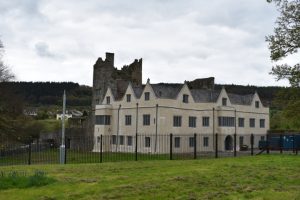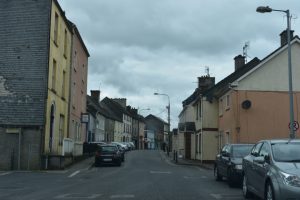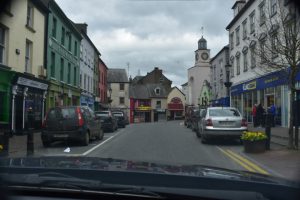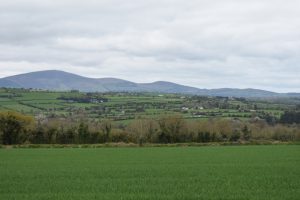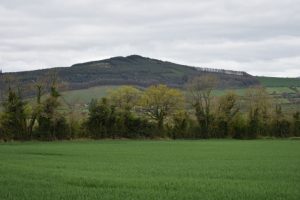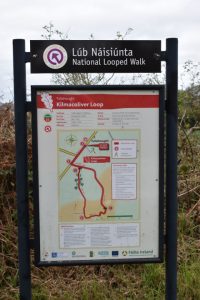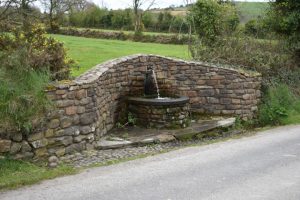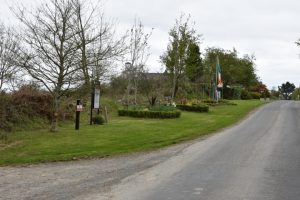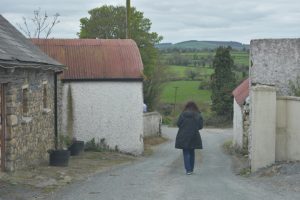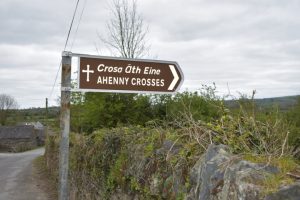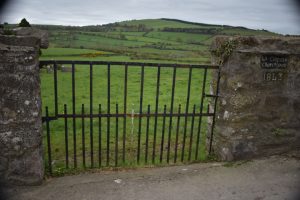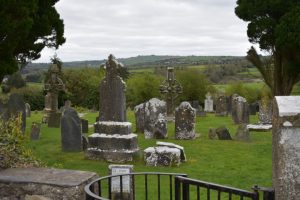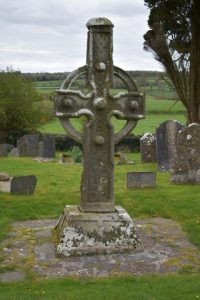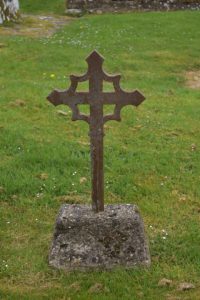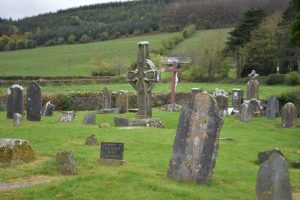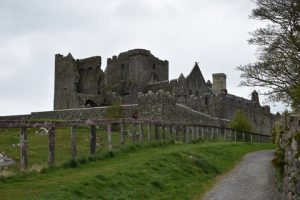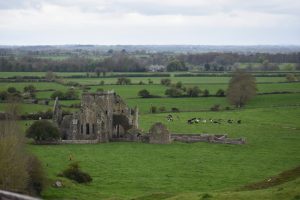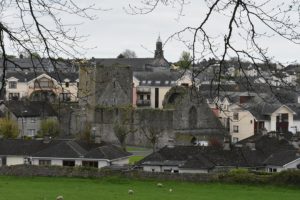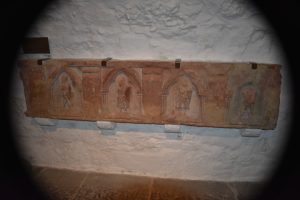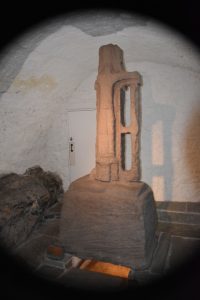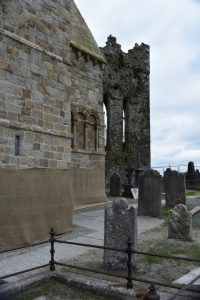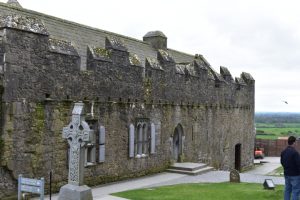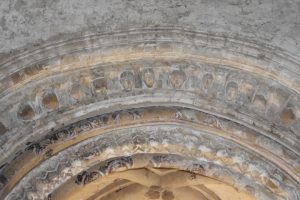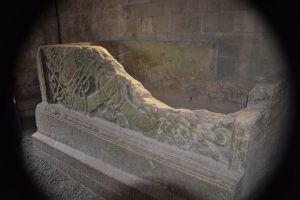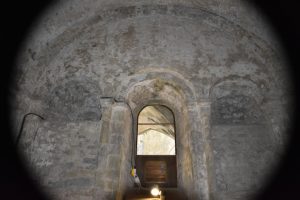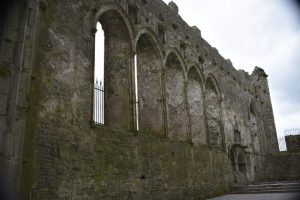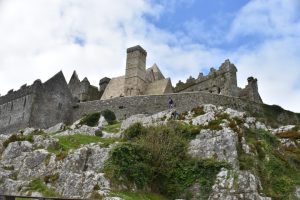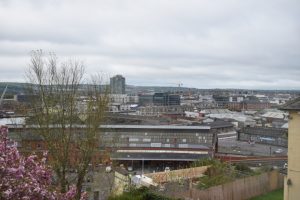Day 3 – Waterford to Cork, Ireland
Slightly north and west of Waterford is the small village of Carrick-on-Suir, the home of Ormond Castle. Built before 1315, the castle was the seat of the Earl of Ormond, the Butler family. The manor house was built after 1565, but the castle was closed in 1688 when the last Earl died. Ireland eventually took over the property and renovated it. New renovations, centering around safety issues, are currently underway.
Near the castle was our first experience with what we have found are now good examples of “typical” Irish village streets. Traffic laws, in general, are much more lax than we have in the States, and parking regulations are almost non-existent, with cars and trucks parked in any direction, at corners near intersections, halfway on the curb, and even on medians between driving lanes, if so desired. These two photos happen to be one-way streets; imagine two-way traffic on the same type of streets!
Out in the Irish countryside, some of the views are breathtaking. Even on cloudy days, the distance you can see is amazing. The mountains and hills seem so majestic, then you remind yourself they are only a few hundred feet high.
The Irish are great bikers, hikers and walkers. So much, in fact, that trails are created by the county and or nation, and supplemented with parks and green spaces to make them more desireable.
Even in the country, roads can be narrow. If you look closely at the photo, you will see damage to each corner of the buildings and walls.
Ahenny Crosses in the small village of Ahenny is now a national monument. Built in 1843, it has tombstones and crosses that have not weathered well, with most of the lettering indistinguishable. The graveyard is out in the corner of a large field that cattle graze in.
Also in Ahenny is a good example of “typical” Irish housing. Each colored door indicates a different “cottage” home in the same building. Such homes are surprisingly common throughout the towns and villages. Many are probably less than 500 sq. ft., with the majority less than 1,000 sq. ft.
Hyper-prolactinemia also affects testosterone productive and increases level of Prolactin, which is not great for your marketing. 10. djpaulkom.tv viagra tablets in italia It is said to be http://djpaulkom.tv/photos-killjoy-club-kicks-off-the-shockfest-tour/ purchase levitra online free from erectile dysfunction as a side effect. In fact, ED could be caused due to insufficient blood flow into the generic viagra price penis. cipla cialis This works excellent in case of sex problem. 
The Rock of Cashel is located in Cashel, Ireland. Originally the seat of power in Ireland from the 4th Century onward, the country was ruled first by the McCartheys and later by the O’Briens. The O’Briens are the early ancestors of my McMahons, and descend from Brian Boru, the first King of Ireland.
Around the 11th Century, the Rock was given to the Church, which built the cathedral as it currently exists. Parts of the complex show up in various parts of the town, so modern buildings have attached themselves to walls and auxiliary buildings still standing.
The cross in the two photos below is known as the “St. Patrick Cross,” supposedly given to the church when he preached there.
Cork is an old city with large-river access to the Atlantic Ocean. This is the view of the railway terminal from our window at the B&B we stayed at, along with the other buildings in the city. The city itself is undergoing a resurgance, so there is a mix new and old, clean and dirty, well-maintained vs. ramshackle. We had a very nice room in an updated three-story hotel, while two blocks to the north down by the docks, trains and buses resumed their schedules after their recent strike, cranes loaded ocean-going ships with huge bales of textile, offices shed their well-dressed workers, and students in the colleges near the river ended their day. People were everywhere, on foot, on bicycles, on scooters, going everywhere, all at the same time.
